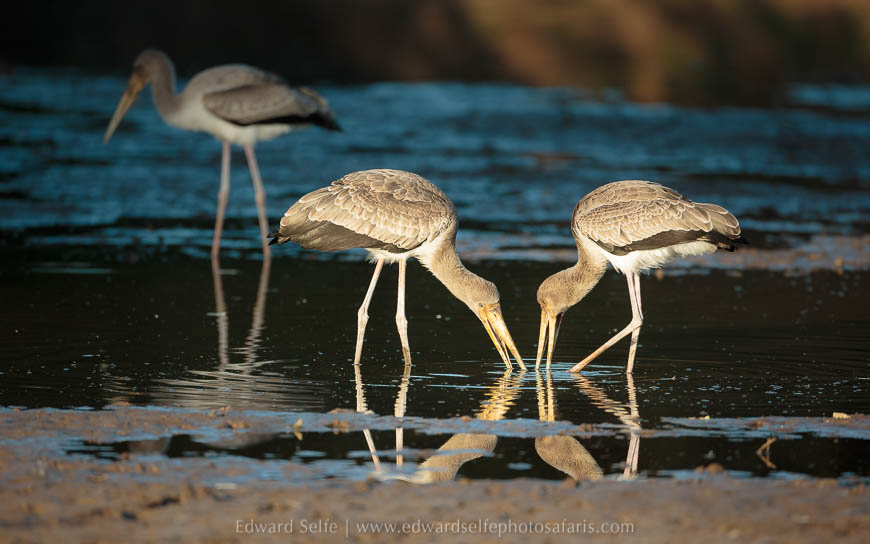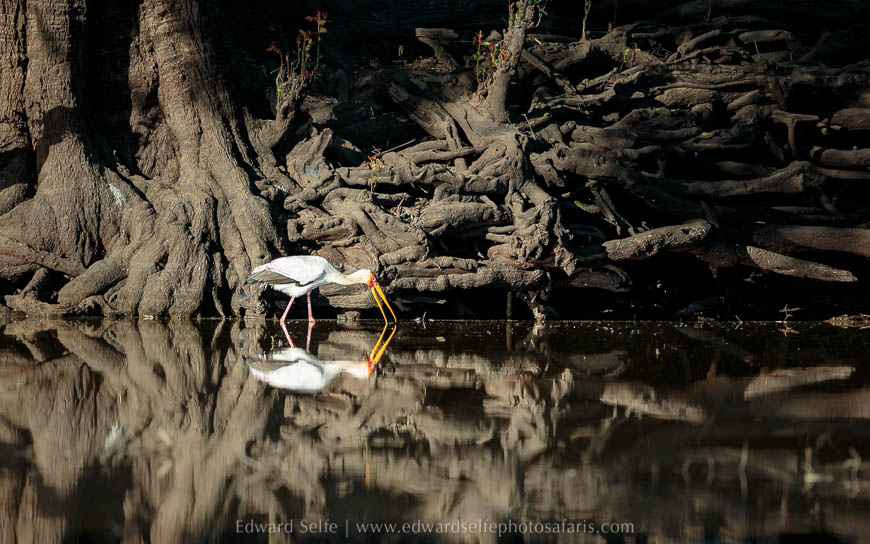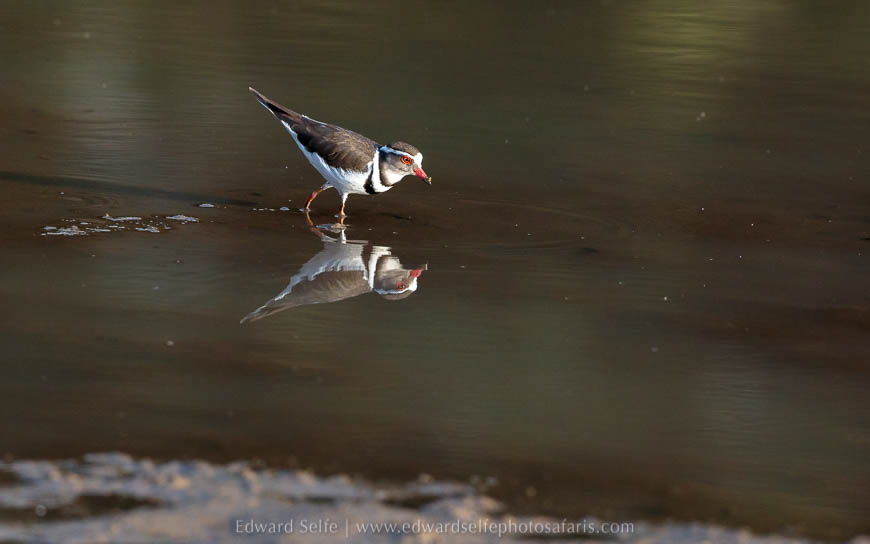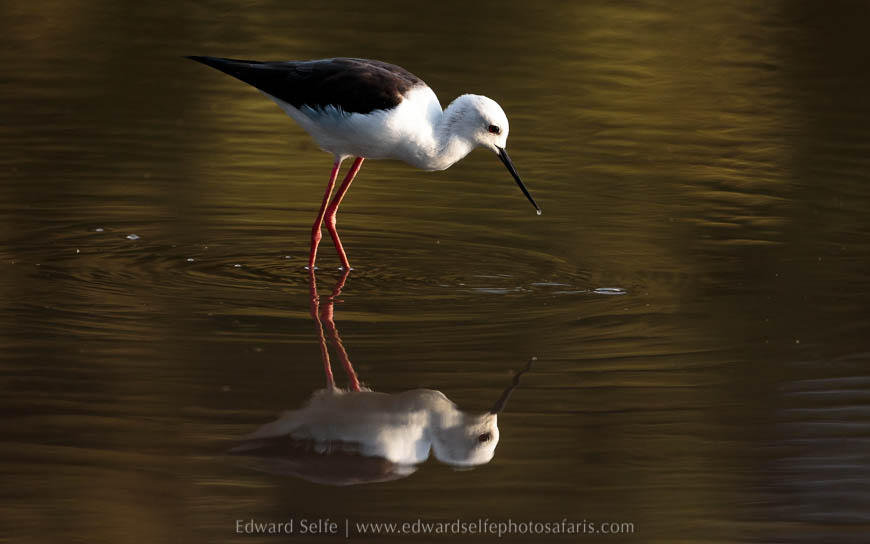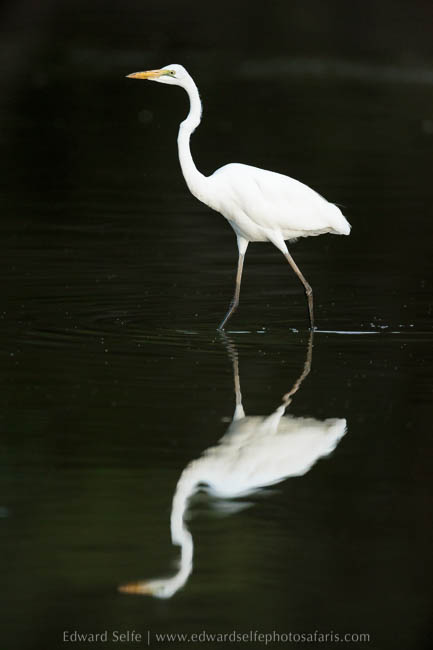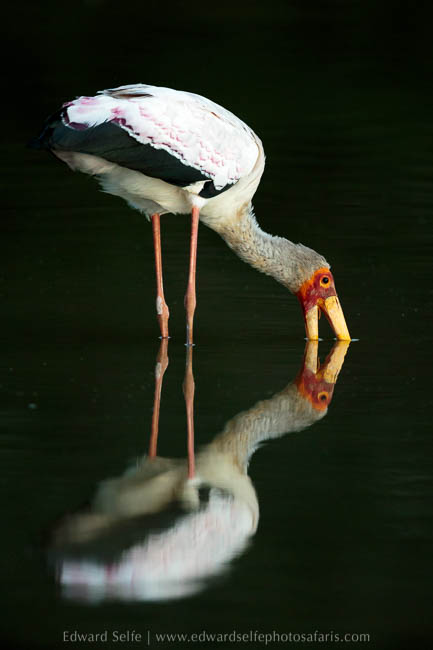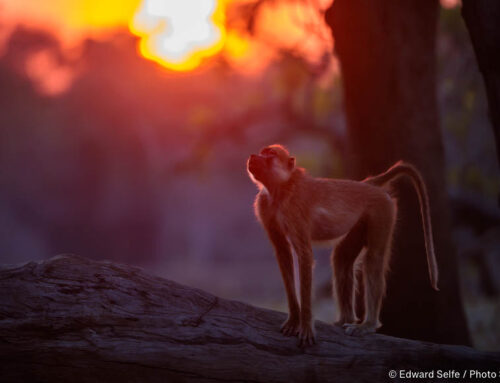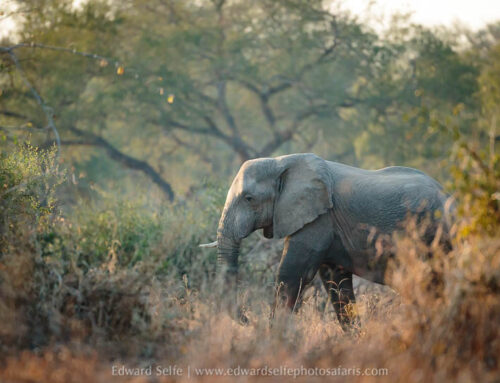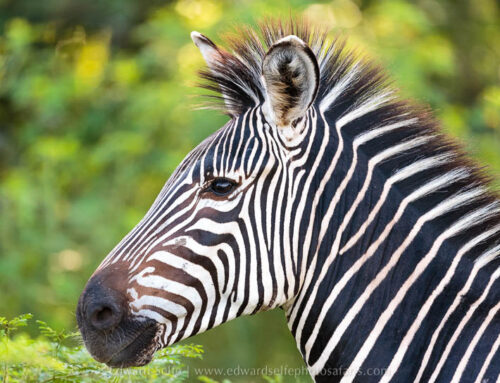I’m just back from a long safari — write up to follow soon — with lots of incredible experiences! But among the highlights were buckets of wonderful “normal” sightings including beautiful waterbirds in the park’s drying lagoons. Against the backdrop of shady trees, we were able to photograph portraits and behaviour with a black, almost glass-like backdrop.
These shots work so well because the bird stands out from the background, but beware because in such situations the dark background will cause the bird to become over-exposed. In most of these images, the exposure compensation was at or below -1.
